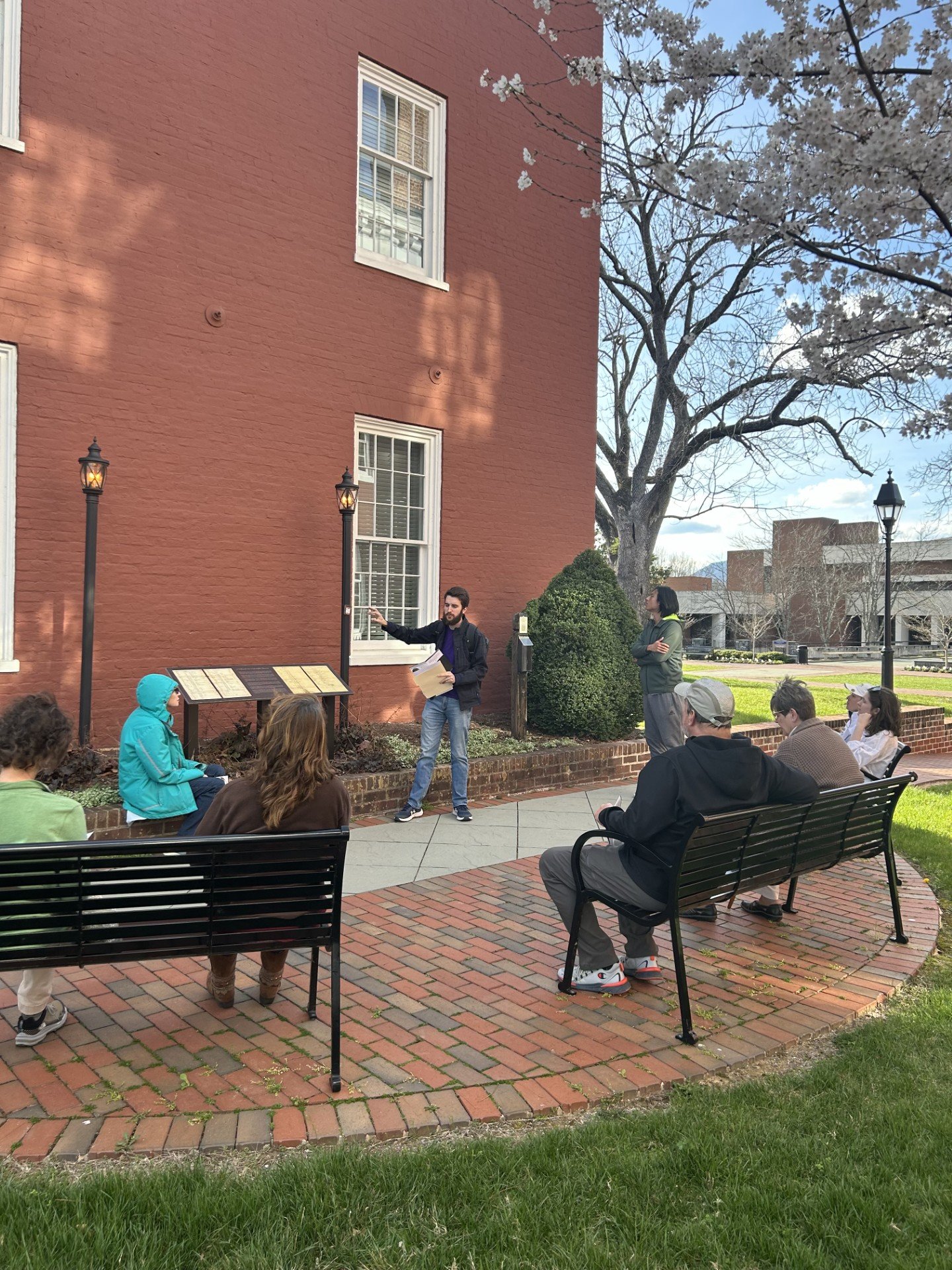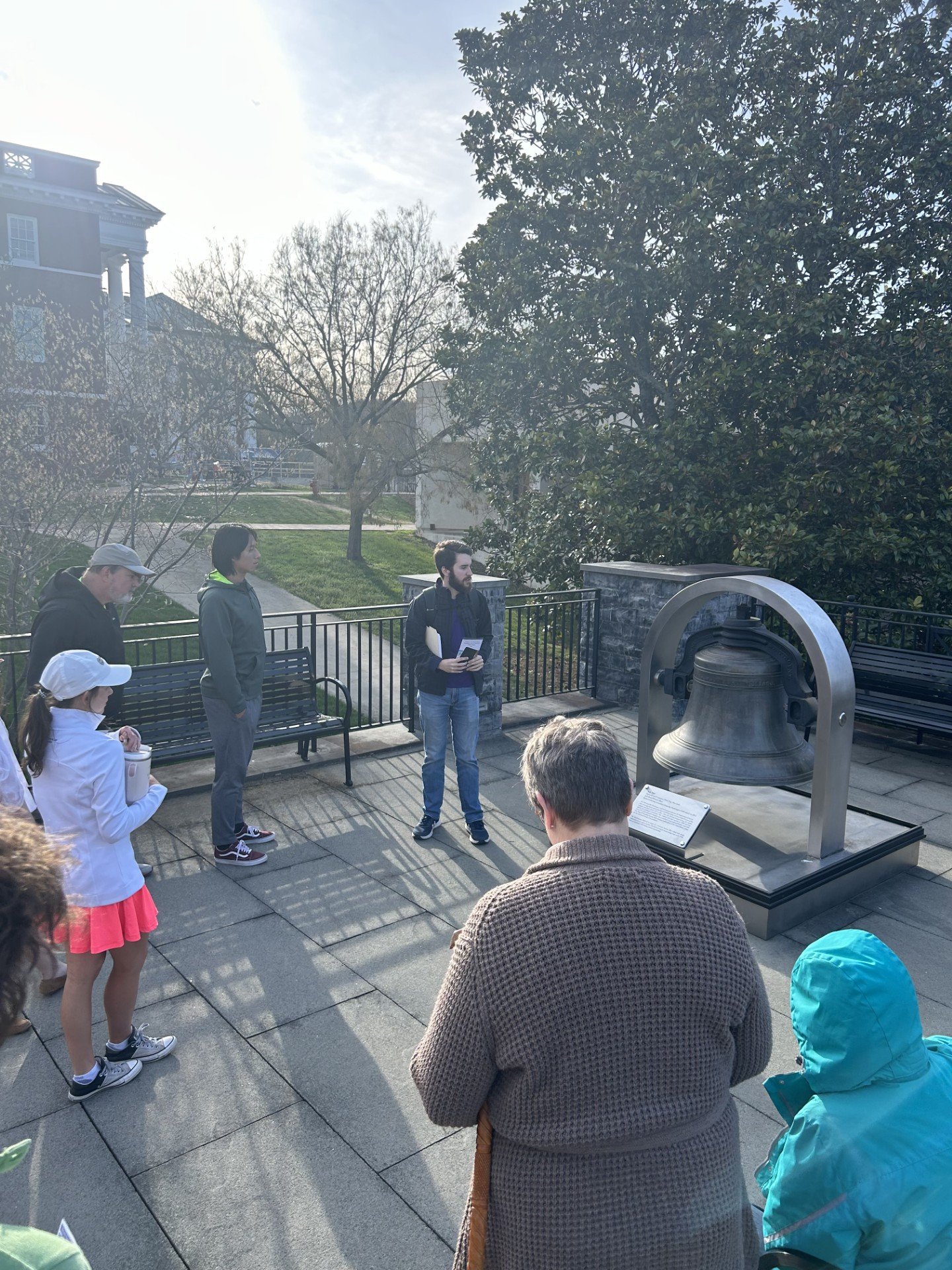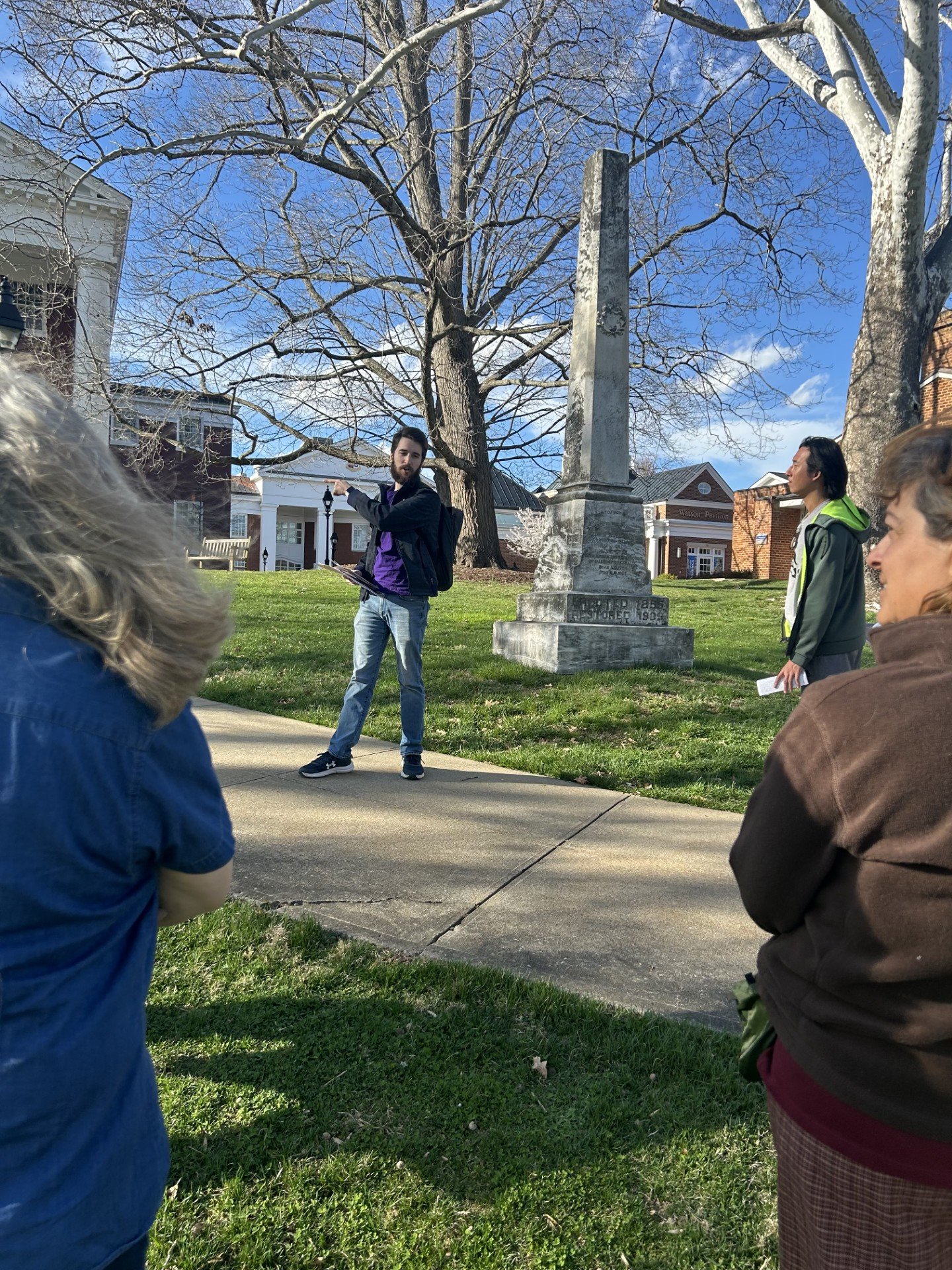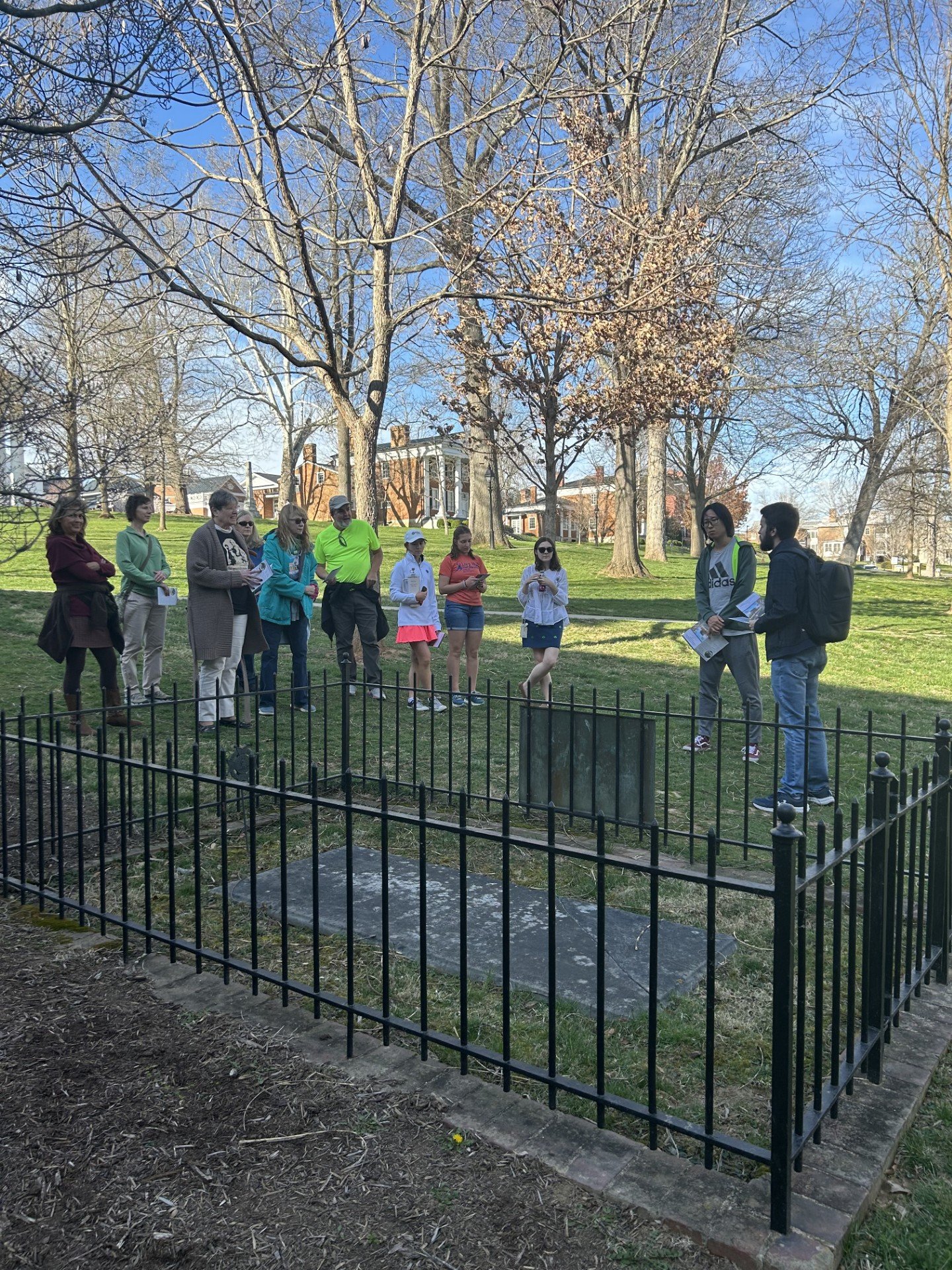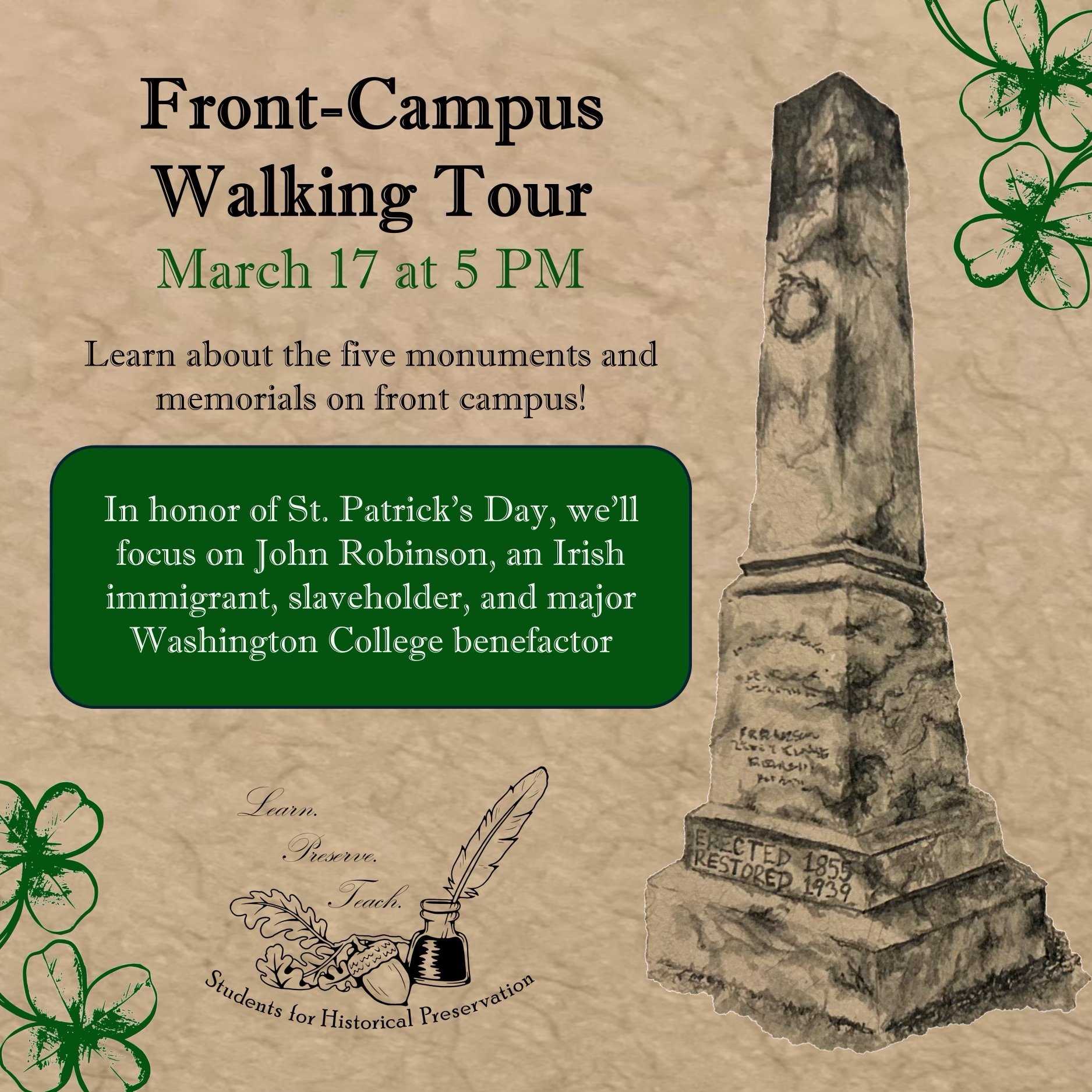Student Group Leads Tour of Campus Monuments
Student Group Leads Tour of Campus Monuments
Students for Historical Preservation examined five front-campus monuments and memorials.
(Front-Campus Walking Tour Announcement Post, Source: SHP Instagram)
Students for Historical Preservation (SHP) learned about five front-campus monuments on March 17, 2024, focusing on the legacy of Irish immigrant and college trustee “Jockey” John Robinson. The tour was led by SHP president Kamron Spivey, ’24, who conducted research and created a pamphlet about those monuments.
The tour began with the Cyrus McCormick Statue, which was erected on September 25, 1931 for the Centennial of the Reaper celebration. McCormick, a Rockbridge native and inventor of the mechanical reaper, gave $10,000 to Washington and Lee University after the Civil War and $20,000 total donations by the time of his death, making him one of the most influential donors to the school during Reconstruction. His family continued to donate money throughout the 20th century.
Students then walked to William Graham’s grave. Graham became the first rector (or president) of Liberty Hall Academy (now W&L) in 1774. Spivey said that his memorial is often forgotten on campus due to a lack of markings and no sidewalk. His grave was originally located in Richmond but was moved to the northeastern side of Lee Chapel in 1911.
In honor of Saint Patrick’s Day, the tour highlighted the impacts of John Robinson, who Spivey said was the largest benefactor in the college’s early history. Robinson made his first donation to the college after the Liberty Hall Academy building burnt down in 1803. In 1821, he provided at least $2,000 of the $9,000 required for the construction of what became Washington Hall, Spivey said. Upon his death, Robinson was unmarried with no children, so he left his entire estate to the college. This included thousands of acres, 76 enslaved people, and a large distillery.
Spivey said that the marble obelisk was erected over John Robinson’s grave in 1855 shortly after he was exhumed from another location on campus. Spivey shared facsimiles of the time capsule document buried underneath the monument. The letter describes the conditions of Robinson’s remains and the artifacts buried with him.
Students then walked to the Memorial Garden for Enslaved People, which university officials dedicated in 2016 next to what was then Robinson Hall. In 2019, the memorial garden was expanded, and the building was renamed “Chavis Hall.”
Spivey said that while the signage recognizes many slaves owned by the university, a portion of the information on the memorial is incorrect. For example, the sign says that “the most well-documented episode [of the university’s involvement with slavery] … is the 1826 bequest of 84 enslaved African Americans to Washington College from ‘Jockey’ John Robinson.” But at the time of Robinson’s death, the number of enslaved people bequeathed was 76.
According to Spivey, this inaccuracy owes to the nature of the document used in the 2016 memorial. While the document lists the names of 84 enslaved people, Spivey said it was a “living document” that was updated for several years as children were born into slavery.
“The Enslaved People bequeathed to Washington College in 1826 are not easily biographized,” Spivey’s pamphlet reads. “We know very little beyond their age, first name, and ‘appraised value’ of between $0 to $500 each.”
The final monument visited was the bell located outside Leyburn Library. During his presidency of Washington College, Robert E. Lee had wished for a bell and organ to be installed in the newly constructed college chapel. A year after Lee’s death, Spivey said that the school purchased a bell in his honor. In 1889, the bell cracked and was melted down to create a new one in the cupola of Washington Hall that was used until 1927; this is the bell currently displayed outside the library.
When asked about her thoughts of the tour, Hallie McMurdie, ‘27, shared, “I appreciated learning about the seemingly insignificant pieces of history that are often forgotten about on campus but have had really great impacts on the history of the school. More students should become aware of the rich and complex history that lives in obscurity on front campus.”
On a similar note, Meg Coughlan, ‘27, said, “I quite enjoyed Kamron’s tour of the front campus monuments. I was particularly interested in learning about the bell that once hung in Washington Hall. I walk past it every day and had never stopped to wonder about its history. Now I can appreciate it more as I walk the hyacinth-bordered path on the way to the library.”
Jan Lowry, a Rockbridge resident, enjoyed learning about the McCormick statue, saying, “I have visited the McCormick farm and knew of his contribution to the wheat harvest with the invention and production of the reaper. However, I was not aware of his large financial contributions to Washington College.”
SHP toured W&L’s back campus with archaeology professor Don Gaylord earlier this month, and plans to visit Monticello in April.
